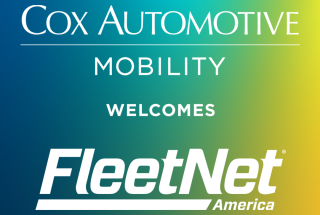Digital Disruption – Are Self-Driving Trucks Good or Bad?
Self-driving trucks. This is a major trend going on right now in the transportation industry. But is this digital disruption good or bad for trucking?
Well, that depends upon who you ask. Some drivers and Fleet Managers see mainly an upside. Others are more intimidated by the technology and feel as though they’re at risk for losing their jobs. But will a self-driving truck every be able to completely replace a human?
What Does the Research Show?
At study by Princeton Consultants thinks it may happen sooner rather than later. In this article in Fleet Owner magazine, they projected this 3 phase implementation:
1.Truck autopilot, assisting a traditional driver who’s still in the seat—variations of which are currently being tested on U.S. highways.
2. Linehaul driverless, for on-highway freight moves (perhaps in pelotons) and with first/last mile conventional drayage
3. Door-to-door driverless, but not before the public believes the technology is safer than human drivers.
So, the question remains when will the “public” believe that this technology is safer than a human?
 In last year’s survey, Princeton found that only 28% of respondents believed self-driving trucks would have a moderate or large impact, compared to 40% in the latest survey. The number who said there would be “no real impact” fell from 24% to 19% this year.
In last year’s survey, Princeton found that only 28% of respondents believed self-driving trucks would have a moderate or large impact, compared to 40% in the latest survey. The number who said there would be “no real impact” fell from 24% to 19% this year.
One thing is for sure, there are going to have to be some real advancements to ever completely replace a CDL driver. As any driver knows, there’s way more to the job than just holding a steering wheel. And while the percentage of people who feel this will have some type of impact on the transportation industry has risen, it won’t take many mishaps of self-driving trucks to change the mind of many.
As business advisors, the Princeton team is still recommending that those involved in the transportation industry take a wait-and-see approach when it comes to self-driving vehicles both in terms regulations and the ever changing equipment itself.
Instead, Princeton Consultants CEO Steve Sashihara offers a more analytic approach as the best outlook to have on this technology moving forward.
“You have to drive up your analytics capabilities,” he said, speaking on a recent Stifel Capital Markets conference call. “You’re going to have start moving your organizational culture to be more data-driven in how you make decisions, and rely less on experience and gut-feelings. Given the low margins in our industry, this is not a competitive advantage—this is, basically, survival.”
Maintenance Analytics
When it comes to your truck maintenance, we feel the same way at Dickinson Fleet. You have to use more of an analytical approach rather than making decisions about what you “think” is working and what isn’t. That’s why we offer WebWrench.
WebWrench makes it easy to keep an eye on expenses helping you track and control costs. We use detailed reporting and analytics to help you understand where you largest costs are and what type of repairs might be coming up. This helps minimize large, unplanned expenses.
Want More Industry News?
See other articles like this one here
Have Questions or Need Help?
Contact us online or call 855-DFS-4111
More on Dickinson Fleet Services
Dickinson Fleet is the nation’s leader in mobile truck maintenance and repair. We currently have 230 mobile trucks equipped with state of the art technology visiting our customers nightly in nearly every major city in the country.

